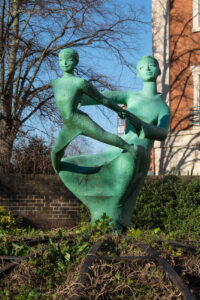Public Monuments and Sculpture Association
The PMSA has been recording permanent public sculpture since 1997, and in 2016 it commenced in the County of Essex. This area was to be the subject of a new approach to recording, using more modern technology and volunteers to help in identifying and photographing each item. The PMSA also appointed a Project Manager based at the Colchester Institute to oversee the project.
The PMSA had used its own resources to commence the work, which required funding for the manager and expenses for the volunteers, but was only able to commit half of the funding needed in the final year. Essex Heritage Trust awarded the PMSA £5,000 to assist in the recording and, with this money, the PMSA was sufficiently supported to enable the completion of the project.
The majority of the items in the county have been identified, and it has been a very successful in the recording of data, that will be of ongoing use both to researchers and the general public.
Throughout this project the PMSA developed a relationship with Harlow, a town of sculpture with a reputation for being a great champion of public art. The PMSA has worked with Harlow to launch a new education project, with the aim of engaging schools in the appreciation of public art. We sponsor modest awards for work done by children with the sculptor in residence, and have a commitment to do this annually. There was also an exhibition held at the Minories Gallery with high quality photographic work on show.
The PMSA has also made connections with the County Council and the University, as they wish to continue with academic research on those items for which they have completed the basic recordings. This work will be subject to a new project, and would have been impossible to consider without the support of the Essex Heritage Trust.
The PMSA partner, Art UK, was awarded Lottery funds to do further recording in both areas that need updating and that they have not yet been able to visit. The Essex work was the model on which the costings were based, due to its success with working with volunteers, so there has been further added value on a national scale as a result of the grant.

